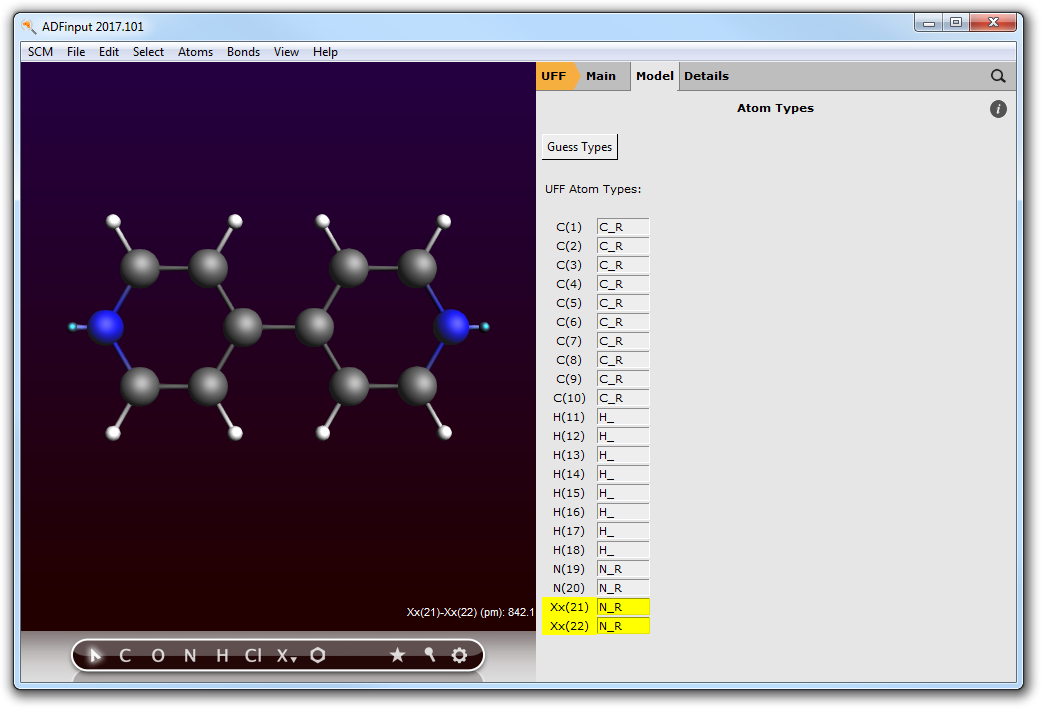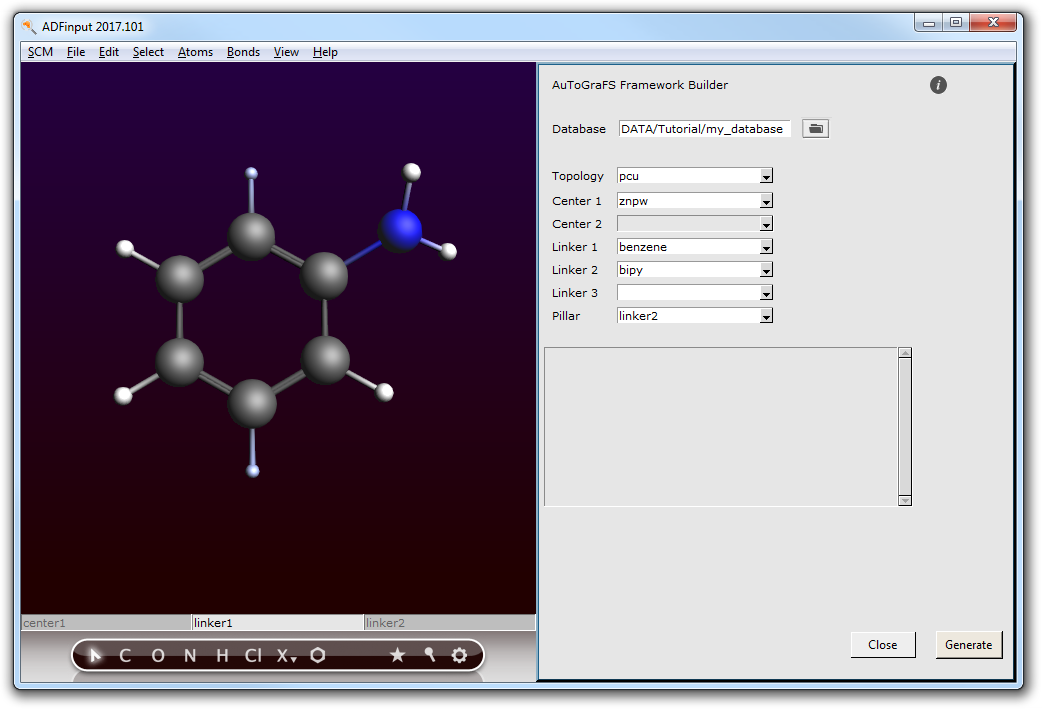Building Frameworks and Reticular Compounds¶
In this tutorial we show to the user how to generate a framework compound through the GUI. These compounds are issued from reticular chemistry, and have received a considerable amount of attention from the scientific community. Well-known families of these compounds are Metal-Organic Frameworks (MOFs), Covalent-Organic Frameworks (COFs), Zeolites, etc.
If you are not interested in periodic structures (for example, if you only use ADF), you can skip this tutorial.
The instruments at your disposal are:
- Autografs Framework builder.
- The export tool for custom building blocks.
The Export Fragment tool¶
While a small database of building units is shipped in the ADF suite, you might need to generate your own collection of parts from which to generate you frameworks. The first step is to create a directory in which these parts will be stored. In the following tutorial, it will be the “~/Desktop/my_database/” directory. Then we start the process of creating and exporting the units.
- Start ADFinput and create the molecule you desire to export, capped with hydrogens. here, we’ll use a benzene moleculeNext make sure to maximize the symmetry of the molecule using the star button.Check that the bonding information is correct.Switch to the UFF -> Model -> Atom Types menu, and fill out the corresponding UFF atomic types. These will be used in the post-processing optimization of the frameworks.

Finally, specify the connectivity of your fragment using dummy atoms.
- replace the hydrogens in para positions with dummy atoms using Atoms -> Change Atom Type -> Xx

You can now export the fragment to your database.
- Edit -> Framework -> Export FragmentSelect the corresponding geometry. Here, linear.Save in the directory my_database/ under “benzene”
Do the same for bipyridine, and export a zinc paddlewheel with the octahedral shape. Note the importance of correctly assigning UFF types to dummies in the bipyridine and the paddlewheel, to specify the exclusive type of connectivity in pillared objects. Dummies connecting to nitrogen should have a nitrogen type, and those connected to carbon a carbon type. Guess Types can be used for a good initial guess.


You are now set up for generation of at least one cubic MOF, with three files in my_database : benzene.inp, znpw.inp and bipy.inp .
Framework builder : Build a pillared, functionalized MOF¶
- Edit -> Framework -> BuilderSelect the my_database directory in the path fieldChoose the pcu topologySelect the centerSelect the linkers in any orderSelect the pillar in the linkers

- The building units are displayed on the left. Any modification will be carried on to the MOFReplace a hydrogen on the benzene linker with an amine group

- Hit the “Generate” button.

- Close the framework builder and optimize using UFF for parts to snap into place.Do not forget to optimize the lattice vectors also!